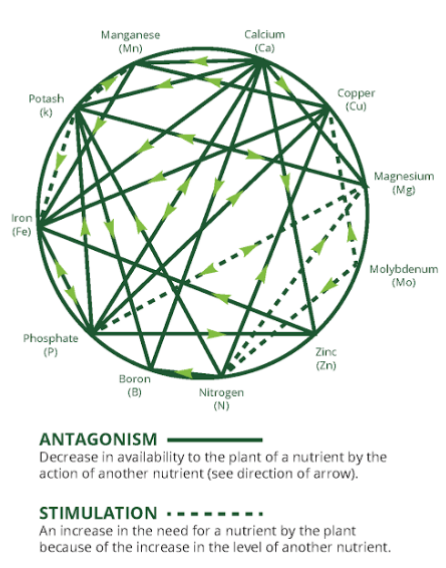Shotage of food within a nation had been attributed to various factors such as War or conflicts, pest and disease incident, poor climate or weather, depleted soil, lack of improved varieties, environmental hazards and lots more. Plants need food to survive. One of the major food of plants are nutrients. These nutrients which are seventeen in number are absorbed from the soil in ionic form. Each of the nutrients play a significant role in the plant that absorb them. Some have similar roles while others do not. These nutrients are essential for plant growth and they include Carbon (C), Hydrogen (H), Oxygen (O), nitrogen (N), phosphorus (P) , potassium (K) , calcium Ca) , magnesium (Mg) and sulphur (S), Boron (Bo) , copper (Cu) , chlorine (Cl) , Iron( Fe) , manganese (Mn) , molybdenum (Mo) Nickel (Ni) and zinc. (Zn) . Only carbon, Hydrogen and Oxygen are not derived from the soil.
A deficiency of any of these nutrients result in noticeable symptoms like necrosis, Chlorosis, Lesions, malformations, malfunctions and reduction in growth and yield. These nutrients called mineral salt will dissolve in water to form Raw Sap which is absorbed into the plant vessels through the root hairs.
To correct nutrient deficiency, lots of people over-supplement with a specific nutrient because they have no knowledge of nutrient interaction. This can further complicate the problem in the soil. Atimes, when a nutrient is in excess, it may not be taken up by plants, even if it is present
in the soil or the solution.
There are two interaction effects. Antagonism (inhibiting) effect and synagism (promoting) effect.
In antagonistic nutrient interaction, overdoses of certain elements will displace another element. When signs of a nutrient deficiency occur, and there is nutrient in the soil, consider an antagonistic situation before adding more supplements so as not to additional problems to the crops
WHAT IS ANTAGONISM
When high levels of a particular nutrient in the soil inhibit the availability and uptake of other nutrients, this is refer to as antagonism. That is, One nutrient decreases the availability of another nutrient in the soil, it inhibits its uptake into the plant, or it impedes its function in plant metabolism.
Using Mulder’s Chart as shown below to explain clearly Antagonistic interaction.

1. High level of nitrogen can inhibit the availability of boron, potash and copper to crops
2. High level of phosphate can reduce the uptake of iron, calcium, potash, copper and zinc
3. High level of potash can reduce the availability of Magnesium
4. High level of Zinc can reduce the availability of iron
5. High level of Calcium can inhibit the availability of Potassium, Manganese, Zinc, Magnesium and Boron.
6. Potassium or Calcium can induce Magnesium deficiency. Potassium and Calcium ions inhibit the uptake of Magnesium ions as these elements are competing in uptake etc.
